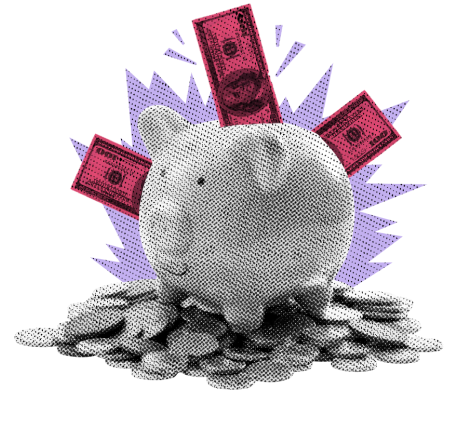
Gold at $4000, S&P at record highs, and a government shutdown—welcome to the “Anything Goes” economy.
KEY TAKEAWAYS
-
The Fed once only managed liquidity, not the economy
-
The Fed Funds rate emerged from interbank lending, not a central decision
-
Markets and gold both hitting records signals confusion, not conviction
-
AI-driven growth may be real, but fundamentals still rule
-
Corporate earnings may decide whether the rally continues–gold or stocks, not both
MY HOT TAKES
-
Bad news has become good again–but that song always ends the same
-
The Fed isn’t driving this market–corporate earnings are
-
Gold’s rise alongside equities shows just how conflicted investors are
-
AI is the real growth engine masking economic fatigue
-
Cole Porter would’ve loved this circus–we just call it monetary policy now
-
You can quote me: “Bad news may be good for traders today, but good news is always still good in the long run.”
Anything goes. Cole Porter famously wrote that the “world has gone mad today”–back in the 1930s. Possibly the first to get on the “good’s bad today, black’s white today” bandwagon (his actual lyrics). If he only knew that almost a century later, the Government would stop paying employees and lock its doors, as politicians bickered over social media, he might have written the lyrics a bit differently. Porter penned that music and those lyrics long before the Fed used the Fed Funds rate to manipulate inflation and the labor market. Back then, the Fed was mainly concerned with keeping the banking system liquid, lending banks money in order to avoid bank closures.
The Fed actually controlled economic activity loosely through manipulating the Discount Rate, the rate at which banks can borrow directly from the Fed’s “discount window.” In practice, back then and even today, they prefer to borrow from each other in order to avoid signaling weakness. Banks borrow and lend to each other overnight using the Fed Funds Rate.
In Porter’s time, the Fed was simply a lender of last resort, hoping to avoid a 1907-like financial crisis. It wasn’t until the 1950s that the Fed began to manipulate the bank-bank lending rates, now known as the Fed Funds Rate. I would also like to clarify that–in case you didn’t know–the Fed doesn’t set the Fed Funds rate, it manipulates using open market operations to achieve a target. So, when the Fed “cut” rates last month, it technically lowered its target to 4.25% from 4.5%. It was able to manipulate rates to that point through buying and selling treasuries (probably buying, if you understand how bonds work 😉), more specifically through repos and reverse repos (probably repos if you understand the repo market 😉). You don’t have to memorize that–it won’t be on the exam, but you should know that the Fed is extremely active in the public markets in an attempt to achieve its now famous dual mandate, which by the way, didn’t exist until 1978, resulting from the Humphrey Hawkins Full Employment Growth Act.

Now that we got that little bit of history and mechanics out of the way, we come to the markets. Markets, as we all know by now, have been hyper focused on Fed policy. Initially, the market’s focus was akin to a treat-addicted puppy, or a candy-addicted child seeking a sugar rush, but more recently, rates have been looked at as a means to avoid a breakdown of the labor market, which could lead to a recession. Rightly so. The Fed, like a responsible parent or dog owner, is in no rush to satisfy, and that tension has caused investors to hope for bad economic news, “bad’s good today,” in Cole Porter’s words, kind of.
The Fed reluctantly relented last month by cutting its Fed Funds target in response to a growing wave of weak employment figures. Recent monthly numbers along with a recent annual reconciliation have shown a clear weakening trend in the US’s labor market. Despite this, the central bankers are not eager–in words at least–to quell the market’s fear. But what they have given has been enough to keep markets powering higher. Of course, it’s not all the Fed. We are unarguably in the midst of a massive economic expansion that will be powered by the efficiencies provided by AI-based innovation–that’s not hyperbole–it's real. Besides AI, consumers and consumption remain strong as evidenced by solid GDP growth year to date.
Last week, the S&P 500 achieved 2 all-time highs in the midst of a government shutdown. It was a week after which we missed an important economic number (monthly labor report from BLS), no weekly jobless numbers, and FOMC minutes which underscored a divided FOMC. Along with equities achieving new highs, gold–the doomsday go-to trade–also made new highs above $4000. This is a rare occurrence as one is a risk-off indicator and the other a risk-on one. Talk about anything goes, and “black’s white again.”
Now, the week did end in a bit of a painful selloff as an old, almost-forgotten wound was reopened with some tough-talk saber rattling between China and President Trump. Check out the following chart and follow me to the close.

This chart shows the S&P 500 (white line) and gold (blue line). The former is just below its all-time high and the latter is at its all-time high. Because this is such an unnatural occurrence, many are concerned that a superstorm may be brewing, certainly if you think the gold trade is a good indicator of impending disaster.
So, what is it that will be the judge of whether gold is correct or equity markets are correct? Well, the answer should be clear: corporate earnings, of course. The Fed is doing what it’s doing–playing hard to get but willing to nourish the economy, albeit reluctantly. We are in a virtual data blackout with the government shutdown making any Fed policy guessing completely blind. Fiscal policy is on hold with the government shutdown. It is now up to the companies, whose stocks make up the indexes that we all talk about, to power the markets higher, and we are about to find out just how well those companies did last quarter and–even more important–how they expect to finish up the year.
JPMorgan Chase will release its earnings tomorrow morning, marking the official, unofficial start of Q3 earnings. Expectations are high for all sectors, but especially high for financials which had an extremely strong showing last earnings season. Many banks announcing this week will also give us color on the strength of the consumer. To be clear, the bar is super-high for all corporate earnings, in this zany world where economic conditions appear to be decaying one day and thriving the next. A world where the Fed is dovish one day and hawkish the next. The Administration is fighting with China one day and making up the next. The real question is will “good be bad” tomorrow. Well, we will most certainly find out.
It is highly unlikely that bad will be good, and please remember that good is always good in the long run. Cole Porter wrote his American Standard in the midst of the Great Depression almost a century ago. The world is very different today, and if he thought it was “mad” then, what would he think today? Stay focused, stick to your principals and keep your eyes on the music.
FRIDAY’S MARKETS
Stocks got slammed on Friday after being sucker punched by the President’s threat to increase Chinese tariffs by raising its tariff by 100 percentage points in response to Chinese threats to curb rare-earth element exports. University of Michigan came in close to expectations, relatively flat month over month. Gold gained as the fear trade picked up, and bond yields fell as traders rushed into treasuries as a safe haven.

NEXT UP
-
Many important economic indicators expected in the week ahead (like Retail Sales and CPI/PPI) have been delayed due to the shutdown. We may get some housing numbers and regional Fed numbers. Instead, corporate earnings are in the driver’s seat this week, so download your weekly earnings calendar in order to be ahead of the game.
.png)

